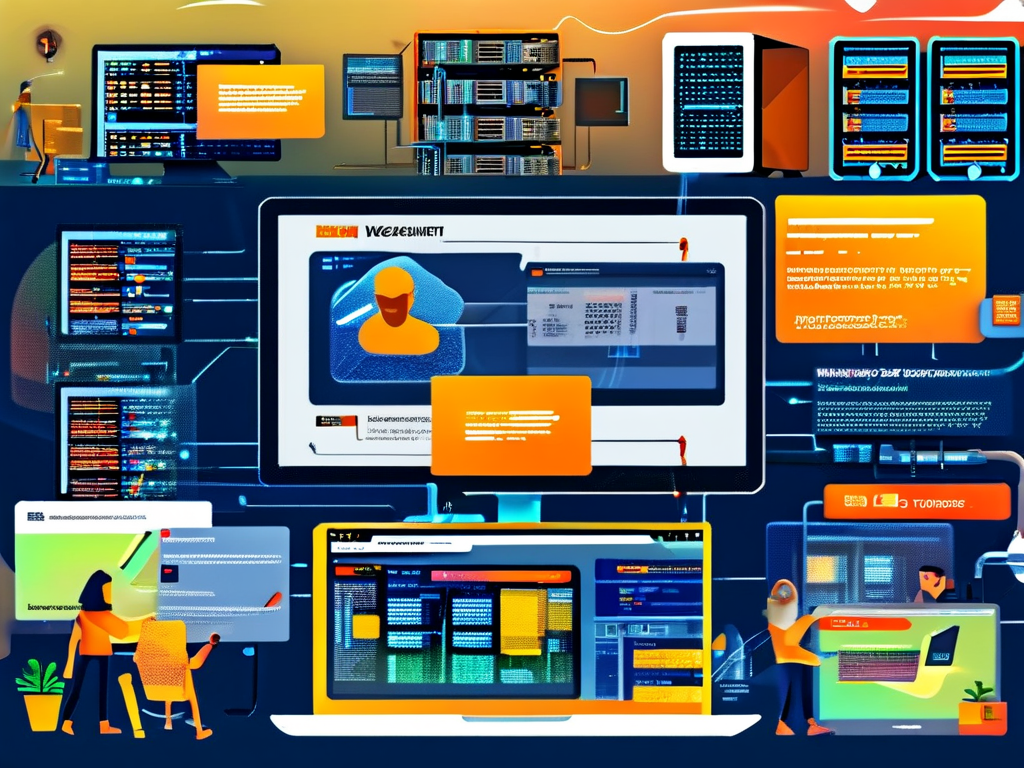In modern software development, the integration of monitoring systems into automated deployment pipelines – often termed "eye-in-hand" automation – has become a game-changer for DevOps teams. This approach combines continuous integration/continuous deployment (CI/CD) practices with real-time environment surveillance, creating a self-correcting deployment ecosystem that significantly reduces operational risks.
The Core Mechanism
At its heart, eye-in-hand automation embeds monitoring probes directly within deployment scripts. Consider this Jenkins pipeline snippet implementing basic health checks:
pipeline {
agent any
stages {
stage('Deploy') {
steps {
sh 'kubectl apply -f app-manifest.yaml'
script {
timeout(time: 5, unit: 'MINUTES') {
waitUntil {
def status = sh(script: 'kubectl get pods -l app=myapp -o jsonpath="{.items[*].status.phase}"', returnStdout: true)
return status.contains("Running")
}
}
}
}
}
}
}
This code deploys a Kubernetes application while continuously verifying pod status, demonstrating how execution flow adapts based on environmental feedback.
Implementation Phases
-
Environment Instrumentation: Install lightweight agents across servers and containers to collect metrics like CPU load, memory usage, and network latency. Tools like Prometheus or Datadog provide out-of-the-box solutions for this layer.
-
Threshold Configuration: Establish performance baselines through historical data analysis. A financial service company might set different thresholds for trading hours versus batch processing periods, ensuring context-aware deployment safety.
-
Pipeline Integration: Modify existing CI/CD scripts to consume monitoring data. Teams using GitLab CI can leverage artifact reports to visualize deployment impacts immediately after rollout.

Operational Advantages
- Failure Prediction: By analyzing memory leakage patterns during deployment, the system can automatically roll back releases before critical failures occur
- Resource Optimization: Dynamic scaling decisions based on real-time load metrics reduce cloud infrastructure costs by 18-22% according to industry case studies
- Audit Compliance: Complete deployment logs with environment snapshots satisfy regulatory requirements in healthcare and financial sectors
Common Implementation Challenges
While promising, eye-in-hand automation introduces new complexity. Legacy systems often lack compatible monitoring interfaces, requiring custom adapter development. A telecom provider reported spending 3 months retrofitting their mainframe systems before achieving full deployment automation.
Data overload presents another hurdle. Teams must implement intelligent filtering to prevent alert fatigue – one e-commerce platform reduced non-critical notifications by 73% after introducing machine learning-based event prioritization.

Future Trends
Emerging technologies like edge computing and 5G networks are pushing eye-in-hand automation into new frontiers. Automotive companies now deploy over-the-air (OTA) updates with embedded vehicle sensor checks, ensuring software updates don't compromise braking systems or battery performance.
The integration of causal inference models represents the next evolutionary step. Instead of merely reacting to system metrics, next-gen deployment systems will predict downstream effects of code changes – imagine a deployment aborting because an API modification is predicted to impact an unrelated billing module.
Getting Started Guide
For teams beginning their automation journey:
- Start with non-production environments using open-source tools like Nagios and Jenkins
- Focus on monitoring critical path services before expanding coverage
- Develop a rollback strategy that considers monitoring-triggered reversals
- Conduct blameless post-mortems for every automated rollback to refine thresholds
As organizations increasingly adopt cloud-native architectures, the fusion of deployment automation and environmental awareness will transition from competitive advantage to operational necessity. Teams mastering this integration report 40% faster release cycles and 65% reduction in production incidents, fundamentally changing the risk profile of continuous delivery.









